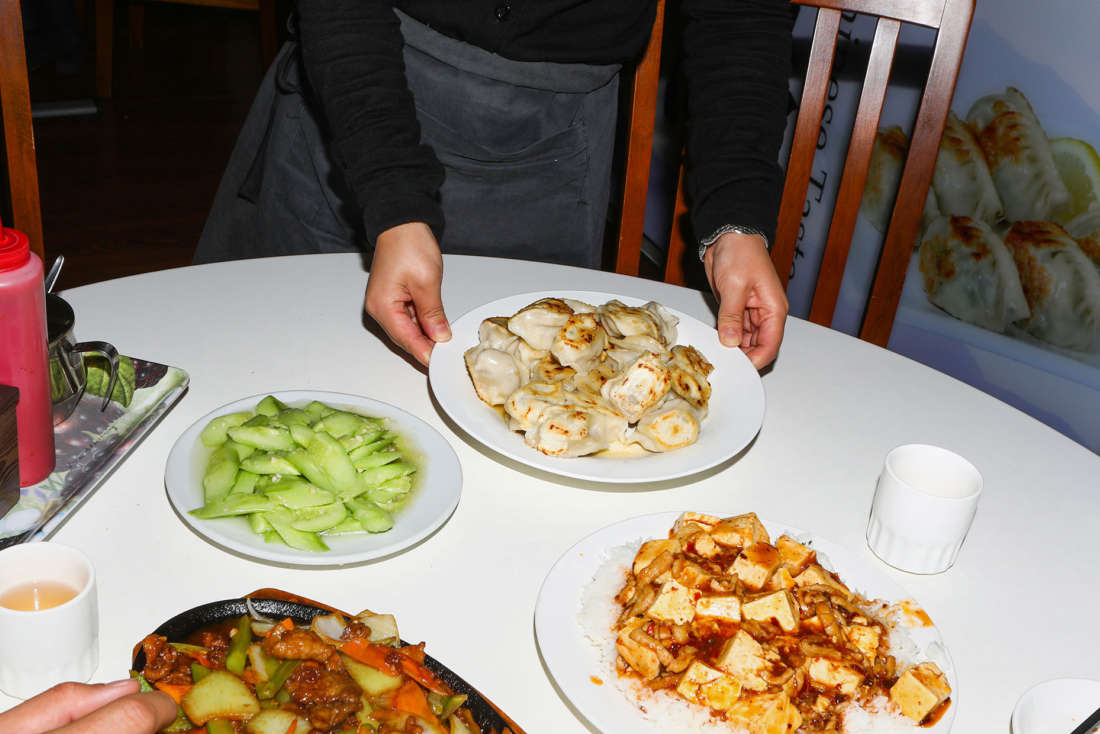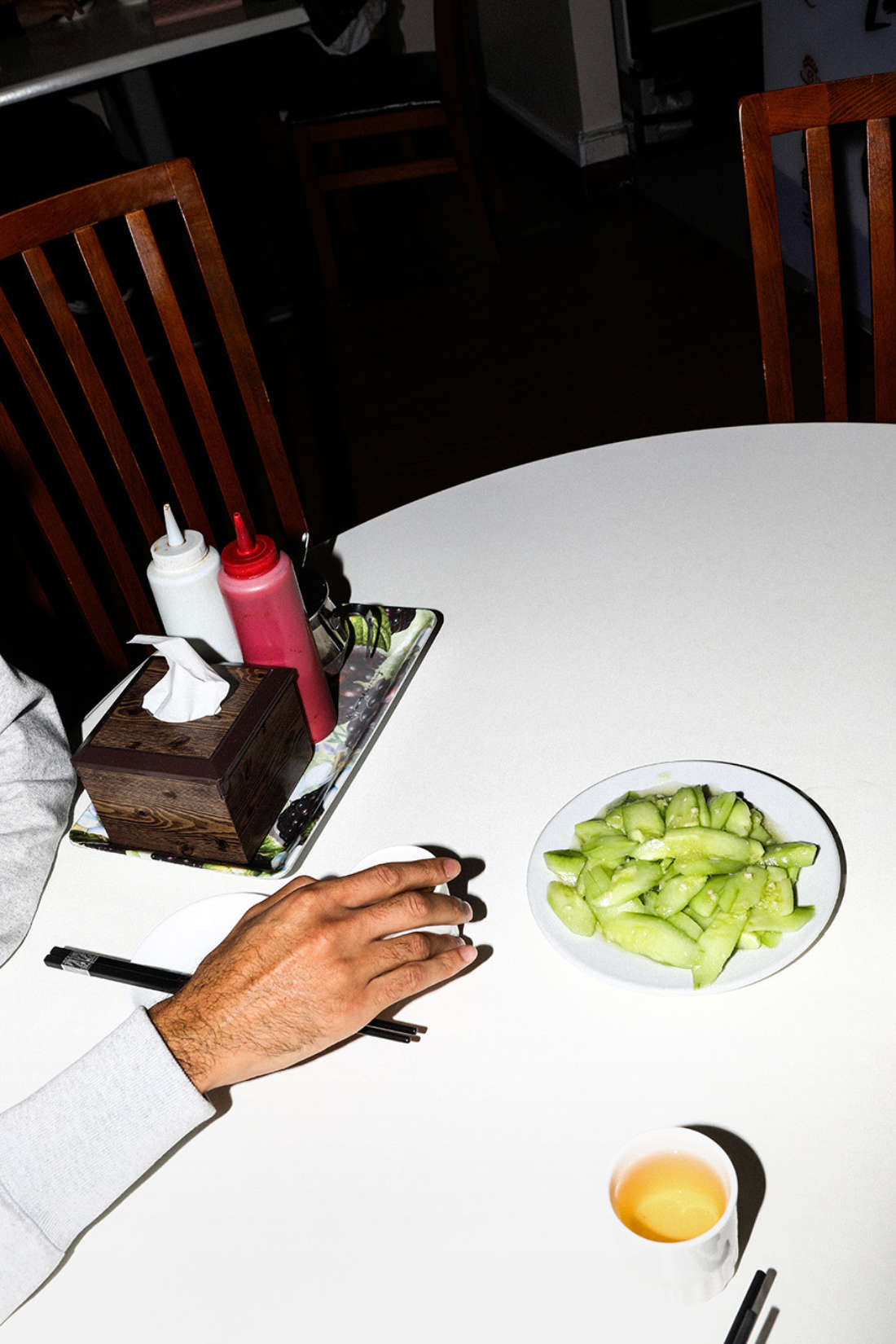Category — Hospitality/Dining

Slam, bam, no thank you Ma’am
When your dumpling lands with a thud on your table
William Chen finds out why service doesn’t always come with a smile at Asian eateries.
The scenario is always the same. You enter a restaurant, nobody greets you and you try to ascertain what your next move is. You might be be pointed to an empty table and a menu plonked on down. As you try to negotiate the menu, a waitperson hovers over you demanding your order. You say you’re not ready, and ask for a couple more minutes. Thirty seconds later, your general is back. You stumble through your order, as you don’t wish to be tensed up for your anticipated food. You see the specials on the wall. But they are in Mandarin. Should you ask for a translation? Forget it. You realise why the specials are in Mandarin. The waitperson cannot handle explaining the Mao Blood Flourishing (duck blood served with squid, beef strips and ham) in English and the restaurant can’t be bothered to get it translated. We all lose out.

You pay for what you get
To keep costs down, not much is spent on shop fittings and ambience. It’s more a do-it-yourself eclectic collection of what the owners can get their hands on: lanterns, fans, prints; sometimes murals. An altar to the Kitchen God is sometimes installed in a fengshui position. That’s an acknowledgement that the eatery wants to do well. But that sometimes doesn’t quite translate to food quality or decor. Don’t expect niceties like a tablecloth. Everything is utilitarian.
A chat to Grant Allen, cultural food observer and former restaurateur (Pierre’s Bistro, Wellington) sheds more insight. Culturally, Asians snack many times a day; they hang out at hawker stalls and hop from one stall to another. So food is prepared quickly but is always tasty. There is no need for service as such, as long as the food is ready and promptly delivered, because people don’t hang around.
You order as you want it and the food comes when it’s cooked. Unless you’re at a banquet, there’s no such thing as courses. There is a lot of prep but the cooking methods are fast and efficient.
Allen says that you cannot have Western expectations when you dine Asian-style. He maintains there is more honesty; it’s all about the food – not the fit-out, linen or the service/performance circus. Service is perfunctory, efficient and definitely not sycophantic.
Cash is king
Unless it’s one of those emporium restaurants with tanks of hapless crayfish and paua stuck limpet-like on the glass of death row, many eateries start off as a husband and wife operation. If they can’t afford to employ wait staff, they might enlist their children to help after school, many still in their school uniform. You can’t expect them to give you any service. They are there under duress, and are more interested in attending to their cellphones or homework. Their level of attention to you the diner is understandably minimal, and no more.
If the owners have to employ waitstaff, they will usually resort to getting students or those on a work visa. The repercussions are obvious to see, especially if they are not even guaranteed a minimum wage. This has been highlighted in mainstream media.
With no training provided – even on what’s on the menu – it puts a lot of pressure on the said staff to perform. Is it any wonder there’s little service, apart from taking your order and delivering? Don’t expect the niceties one would at a Western eatery, go in the knowledge that it is part of the dining deal, and you can still embrace the experience.
Owner power
What the boss says, goes. They have power over their employees – sometimes to the point of exploitation, as has recently been illustrated in the courts and media.
Nam Do, owner of Fusion Cafe on Jervois Rd says it’s easy to see why employees are not motivated when they’re treated poorly, and the customers suffer as well – a flow-down effect.
Service fluctuations in any eatery are bound to reflect the employers’ policy and attitude. If they don’t train their staff to display any semblance of service, they won’t give it.
Eat and run
This is the model many Asian establishments operate on. Jeffrey Ng at Mamak Takapuna explains: “We have a limited window of opportunity during lunch and dinner. The more tables we can turn over, the better.”
Granted, the service here is better than most but the food is still set up so you don’t linger as you would in a long lunch. As in many Asian countries, diners will arrive, order, eat and leave, as they do in their home country.
On Fridays and weekends, certain dessert items like roti tissue are unavailable to keep service momentum flowing. Complicated orders like this can add upwards of 15 minutes to the dining time – time when the table could be turned over. The kitchen functions efficiently turning out dishes, so waitstaff work the room at the same pace. They don’t have time to ask you how your meal is.
If you want service and ambience, you could go to Madam Woo 60 metres up the road. The food is Malaysian fusion, there is a well-appointed bar serving cocktails with umbrellas and the food beautifully plated – even though the origins and tastes might be lost in translation.
Yum char emporiums are notorious for timing the diner. The host will make sure you leave within the hour or earlier, as they usher and marshalls new diners in on an earpiece talkie.
It’s indeed a travesty to wolf down delicate dim sums, as they are very labour intensive to make. It must be rather soul-destroying for the chefs who have painstakingly crafted the dim sims. The wait persons also have to push the dim sums, says Wendy Liu who used to work at China Restaurant. You get a procession of servers working the room robot-like trying to get you to try chicken feet, beef tripe or durian puff, she says.
I’d rather be a pharmacist
Asian eateries attract students who need the money to finance their studies or those new to the country or on work visas. Basically, being a waiter is not a profession here, and that is certainly the case at Asian eateries. Waiting is a stepping stone to something better.
But wait, sometimes you get service with good food
Former restaurateur (The French Cafe) Connie Clarkson, now commercial operations manager at Panuku, acknowledges that service in some Asian restaurants isn’t 5-star standard.
“We are not whisked away to an immaculately-set dining room with impeccable wait staff flawlessly serving food and drink.” If she wanted that, she would go to another restaurant – but they might not be serving the best laksa or roti canai or Hainanese chicken rice at $10 – $15 a dish either.
Clarkson says she has received good service in food halls like Ponsonby International Food Court and Food City, Northcote, where you can change a dish composition without a murmur, the food is in front of you within minutes, is consistently good and comes with a smile and a thank you. Of course service becomes perfunctory when it’s hot and working conditions aren’t the best. She states that it’s also about language and not knowing what the expectations are and there are no training academies to learn it.
“I have had as many unsatisfactory dining experiences in non-Asian eateries as I have had in Asian restaurants without the benefit of great food to redeem the experience.” she says.
You get the service you deserve
Ms Clarkson concludes: “Just because we pay the bill does not give us the right to demand without a ‘please’, crook a finger at the waitperson, or worse, snap your fingers or talk down to those whom we think don’t understand English.
“I have often cringed at overhearing dreadful treatment. Working the floor and dealing with the public is hard work, and those who do the work deserve respect and kindness. Why would we treat them differently? Why would we treat anyone differently for that matter.”
Hear, hear!
Photography: Ken Xun Cao.